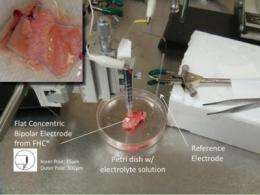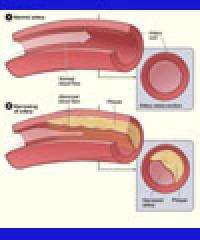Stable plaque or heart attack plaque? Researcher builds new MEMS sensor to tell which is which

University of Sourthern California biomedical engineer and cardiologist Tzung "John" Hsiai hopes to develop a new tool to help clinicians distinguish cardiac emergencies requiring immediate surgery from chronic problems manageable with drugs and lifestyle change.
Angiograms, images made by catheters inserted into the arteries feeding the heart, offer an inside view of the interior surface ("lumen") of these blood vessels, often revealing deposits of a dangerous fatty substance called plaque.
But plaque comes in different forms. Some are metabolically stable and firmly fixed in the lumen and treatable with diet, exercise and medication. Others are less viscous and likely high risks to dislodge and cause heart attacks. These require immediate primary coronary intervention (angioplasty) or by-pass surgery.
The problem: current angiogram techniques cannot distinguish the types. "Distingishing stable from unstable plaque remains an unmet clinical challenge," said Hsiai, who holds both M.D. and Ph.D. degrees.
He hopes that the new Microelectromechanical System (MEMS) sensor his lab has created can change this situation.

The MEMS system uses minute heat perturbations as a proxy for blood flow and detects changes in bulk resistance for plaque characteristics.
The lab has demonstrated that this sensor can make the distinction between stable and unstable plaque in laboratory examinations of specimens of plaque clogged arteries extracted from rabbits fed a special plaque-producing diet
Another configuration of the same sensors can measure the forces on the artery walls produced by blood flows, identifying spots where back currents may be promoting plaque formation.
The next step will be to embed the MEMS sensors into angiogram catheters, and show that they can accurately make the same distinctions, first in animals, then in human subjects.
Every year, approximately one million Americans undergo angiograms, according to the National Institutes of Health. Heart attacks are the leading cause of deaths in the United States, accounting for approximately one-fifth of total annual mortality according to the American Hearth Association.
And "coronary artery disease is rising worldwide because of changes in diet in developing nations, and parallel increases in obesity and diabetes in the West," said Hsiai.
Hsiai's lab recently received a funding in American Recovery and Reinvestment Act (ARRA) funds from the National Institutes of Health to pursue the research.
Source: University of Southern California (news : web)














